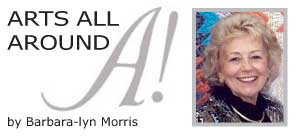

In my early years as an educator, a familiar commercial included the slogan "A day without orange juice is like a day without sunshine." Playing on that, I developed a poetry unit called "A Day Without Poetry." I suggested it is like a day without orange juice AND sunshine. Students rolled their eyes as they completed the phrase in ways typical of teenagers reluctant to be positive. They preferred what Marianne Moore (1887-1972) wrote: "I too, dislike it;/there are/things that are/important beyond/all this fiddle."
Nevertheless, we learned about "all this fiddle" and explored the mysteries of poetry. "How to Eat a Poem" by Eve Merriam (1916-1992) advised us: "Don't be polite. Bite in. Pick it up with your fingers and lick the juice that/may run down your chin."
Friends and family, who know that few days go by when I don't turn to poetry for nourishment, often feed me with books of poems. In the last year, I have devoured the following two mountain-inspired collections, both gifts from the same person:
Places Plain: Poems of the Mountains, edited by Margot Wizansky (Salt Marsh Pottery Press, 2005), takes "us up to the top and down again." Blue is the dominant color in the palette of the mountains: "to live here means/being drenched in the colors/of blue ridges." (Tim Pompey, "Palette") However, in "Mountain Maple" by Kateri Kosek "the greens in the forest/tend toward black/in some places." Judy Wallace's "In the Bitter Root Range" claims mountains to be "Mightier than the warriors and the poets,/...home, the place where/everything began."
From the mountains of Afghanistan where "War grinds stone"("Luck Trek" by Verandah Porche) to "the jagged nipple/of the Tetons" ("From the Lowlands" by Grace Bauer), these verses help define "the mountain within/I am just not ready to reach its summit yet." ("Moments to Live" by Sumi Chatterjee)
Low Explosions: Writings on the Body, edited by Casie Fedukovich with Steve Sparks, is a publication of the Knoxville Writers Guild. Many poems are intensely private, with the body set "among the mountains of Tennessee... [where] the landscape of the mind intermixes with the natural landscape so seamlessly that the two are indistinguishable."
The editors explain the curious term "low explosions" this way: "All of the pieces contend with some major explosion, whether actual...or metaphorical...." Nevertheless, the title remains more troublesome than explanatory. The volume does offer a powerful dialogue about and between women and men, young and old. From "131/2" by Christine Parkhurst to "Face at Forty" by Linda R. Bell and "What is Left?" by Andrew Najberg, time and its inevitable passages haunt the pages of this marvelous, albeit sometimes jolting, compilation of "some of the best writing that East Tennessee - and points beyond - has to offer."
The Chilean poet Nicanor Parra (b. 1914) contends in "Young Poets" that "In poetry everything is permitted. With only this condition, of course, you have to improve the blank page."
THERE'S MORE:
Meet the poets featured in the April issue of A! MAGAZINE FOR THE ARTS and read their poetry by following the links below:
-- Arts All Around: A Day Without Poetry by Barbara-lyn Morris
-- April cover story by Rita Quillen